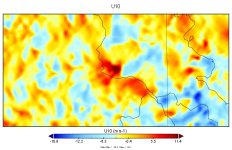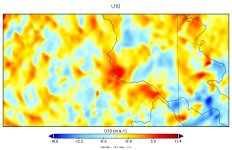Dear Colleges,
I have the WRF model working on two different clusters. The WRF model has been compiled on those two clusters in dmpar (WRF-dmpar) and smpar (WRF-smpar) modes, respectively. The WRF version 3.9 is used. I use the same forcing data, WPS and WRF configurations (namelist.wps and namelist.input) but the simulation results are quite different, with the WRF-dmpar simulations showing better results (compared to observations). You can find attached 17 h 10 min forecast maps for 10 m U wind component over Armenia obtained from the WRF-dmpar and WRF-smpar.
How can you explain this problem? Is it possible to improve the WRF-smpar simulations?
Best regards,
Artur
I have the WRF model working on two different clusters. The WRF model has been compiled on those two clusters in dmpar (WRF-dmpar) and smpar (WRF-smpar) modes, respectively. The WRF version 3.9 is used. I use the same forcing data, WPS and WRF configurations (namelist.wps and namelist.input) but the simulation results are quite different, with the WRF-dmpar simulations showing better results (compared to observations). You can find attached 17 h 10 min forecast maps for 10 m U wind component over Armenia obtained from the WRF-dmpar and WRF-smpar.
How can you explain this problem? Is it possible to improve the WRF-smpar simulations?
Best regards,
Artur


